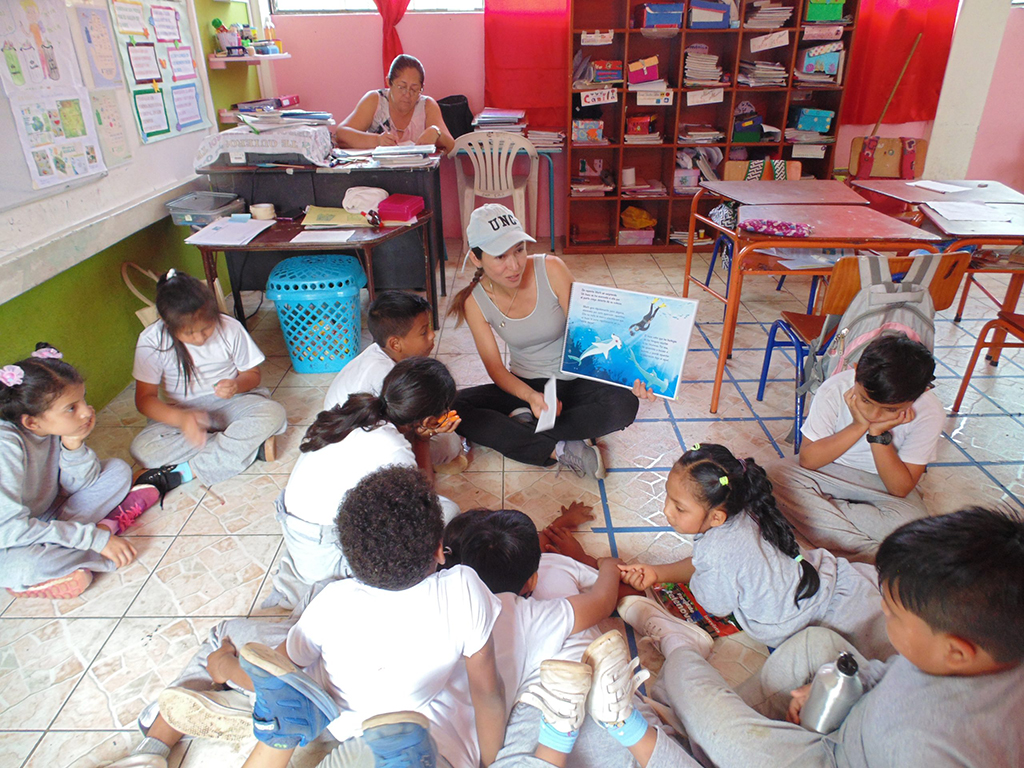Authors: Victoria Castro, Molly Herring and Karina Vivanco
Editing: Kelly Weaver and Karina Vivanco
Review: Leidy Apollo
Through its community outreach programs, the Galapagos Science Center (GSC) contributes to the sustainable development and the generation of greater environmental awareness in the local community. Much of this success is due to the hard work and dedication of Leidy Apolo, GSC’s community outreach coordinator, as she has developed and implemented the Connecting with Nature Program (PCCN).
Under Leidy’s leadership, the 2022 fourth phase of the PCCN has managed to impact more than 2,500 community members. This includes the participation of 799 children in activities, as well as 14 teachers from schools and colleges. In addition, the PCCN received support from 36 local students from USFQ Galapagos and 21 local, national, and foreign teachers, researchers, and experts. As a result, the PCCN has directly benefited more than 6,500 people throughout its 4 stages (2019 – 2022).
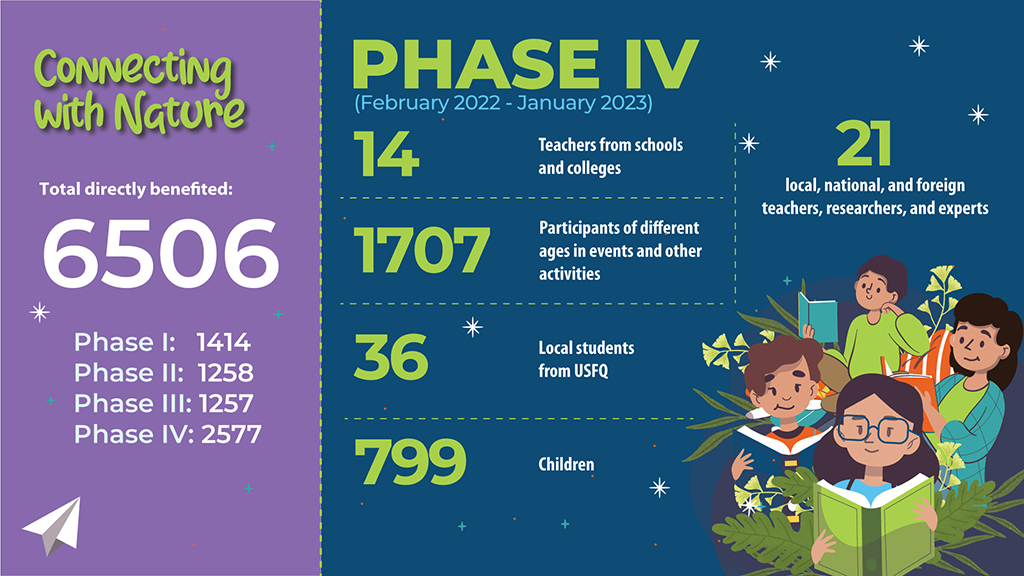
In this interview, Leidy shares her passion for helping communities in Galapagos stay connected and generate social consciousness.
What brought you to the Galapagos Science Center (GSC)?
I originally worked in other outreach projects on San Cristóbal, but came to the GSC because there are many research projects happening here that are beneficial for the islands, but at the same time are not as well-known by people in the community. More people can know what is happening to understand why research is important for conservation. I have focused much of my role on teaching communities, specifically groups of children and adults, or even a mix of ages who participate in the same activity. We are constantly looking for strategies to reach people and achieve the great objective – to increase interest in science and research, and improve conservation values in our community.
What have you learned in this role?
I have learned more about how important it is to adapt to each circumstance. The pandemic taught us all a great lesson in this regard, but every day we find new opportunities to be more versatile in the way we do things. In addition, it is important that community outreach is comprehensive, and created and offered with love. I hope that in the coming years, this area will be strengthened so we can reach more people in the Galapagos, the Coast of Ecuador, and other countries of the Eastern Tropical Pacific.
What do you enjoy most about your position?
I think that what I enjoy the most is designing the activities, putting together a whole proposal of what is going to be done, be it in the classroom or an event on the beach, sharing with people and seeing their surprised faces after learning something new. These activities help us understand why many local, national and foreign researchers carry out different studies on the islands and how this valuable information reaches the institutions to make management and conservation decisions. Additionally, they allow people from the community to become more interested in science, and some of them are looking for ways to become more involved and actively participate.
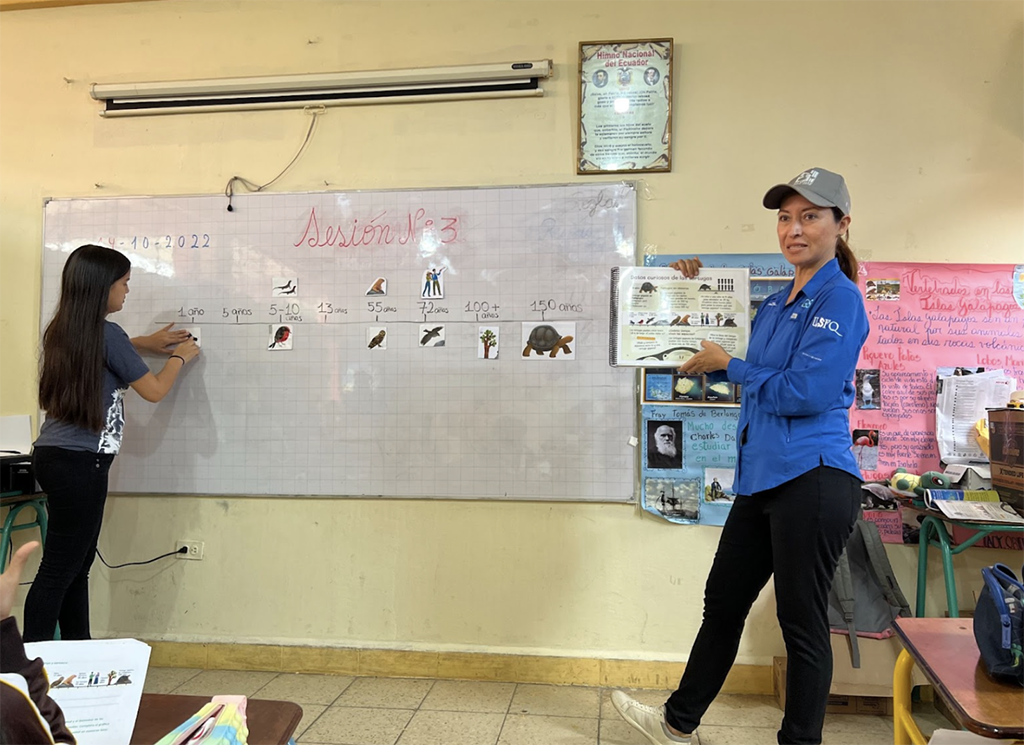
Why do you think it is important to increase the engagement of the community with the Galapagos Science Center?
More than increasing the community’s engagement to the GSC, I think it is important to increase a commitment to the environment in which we live. It is a privilege that many people in the world would like to have, and we want it to exist for many years, so for this, it is important to know, value and protect.
What is unique about how the GSC engages with the community?
We are doing activities in different methodologies and spaces. We are in schools, but we are also on the beach or the boardwalk or the park. We are working with children but also with families and people of all ages. In other words, we get closer to people and make them part of a social or environmental problem that occurs on the islands, to think of possible solutions.
This is the best way to create a link between people and Galapagos research. Otherwise it would remain something far away, difficult to access, difficult to understand, and difficult to do. If we want to have more local scientists, we have to bring people closer in various ways: through a talk, in a species observation outing, or in an event.
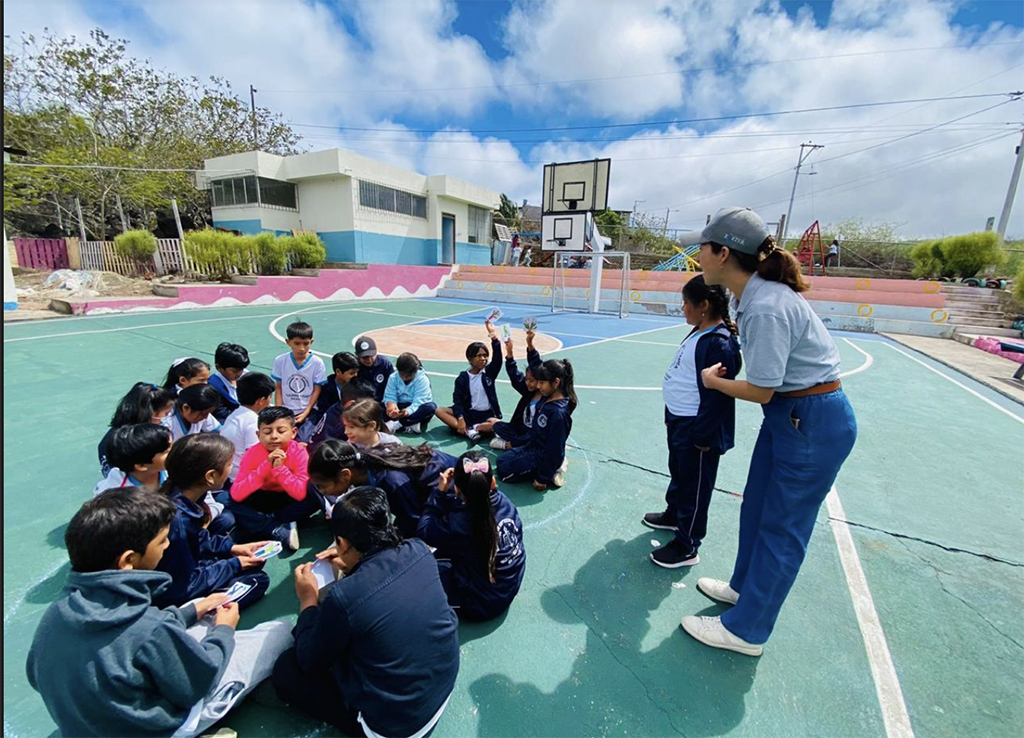
What is your favorite event to participate in?
Family science events are definitely windows full of opportunities to share and learn. We can talk about a social or environmental issue with people who are working on projects on these issues, and we can learn about positive actions to mitigate or reduce local problems.
In these events, we might talk about sharks, birds, sea lions and other species. We always learn something new about their ecology, their threats, and above all, we remember the small actions that we can do for their conservation. The same happens with other topics such as climate change, agroecology, or gender. Each event is an opportunity to raise awareness about a problem, learn, and practice what we have learned.
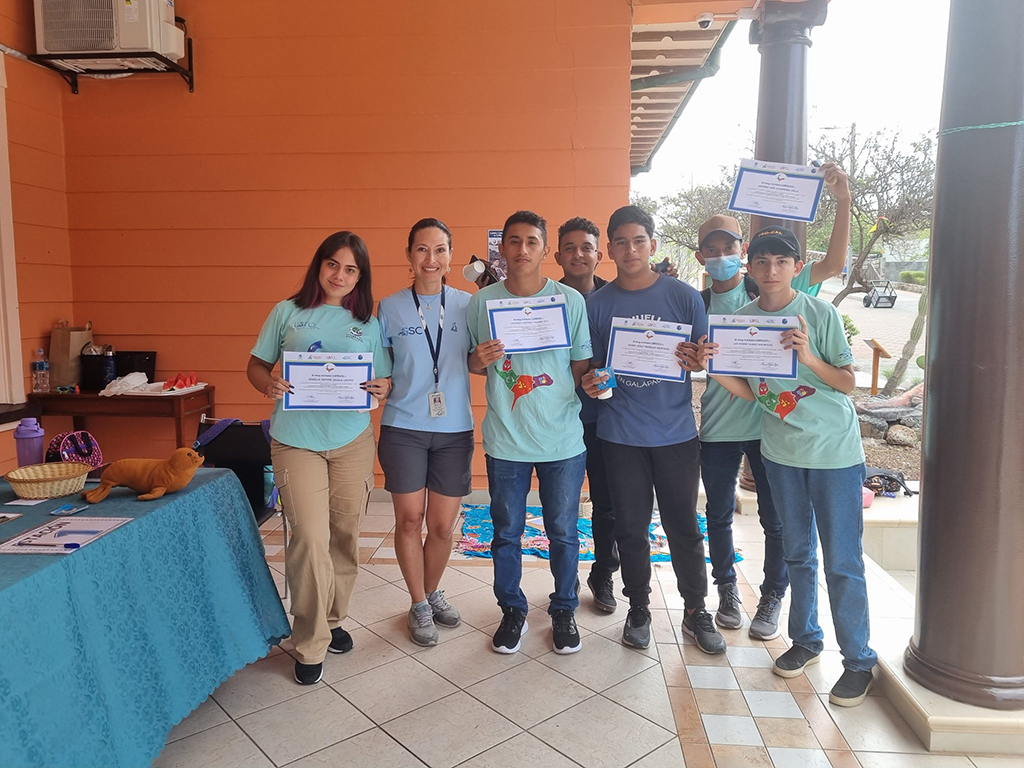
Has your own family benefited from the GSC community and its programs?
My family, mainly my daughters, have participated in various activities and have also helped put on events. They are like part of the staff. They love it, and they have given ideas especially for school activities and family science events and shark day.
Being a mother inspires me because I feel that through my work there will be children and young people like my daughters, who love, value, respect, and protect their environment and also invite other people their age, their friends, and classmates to do the same. It’s what I try to teach them all the time – to share what they learn.
What do you enjoy most about living in the Galápagos?
Perhaps the fact that I grew up in a very similar place made me fall in love with the islands instantly, from the first day I felt that I had always been here. To stay connected with the environment, I love spending time in my garden and going for walks, exploring and observing all the natural beauty that surrounds us.
The great mission of the GSC is for participants (children, youth, or adults) to have a greater interest in science and research after participating in the activities. We try to “sow the seed” and improve conservation values such as empathy and love for the species, the ecosystems, and the islands in general. Living here is a privilege and also a responsibility.
I would like to thank the USFQ and GSC staff who are constantly involved in the activities. The achievements are the result of everyone’s efforts.
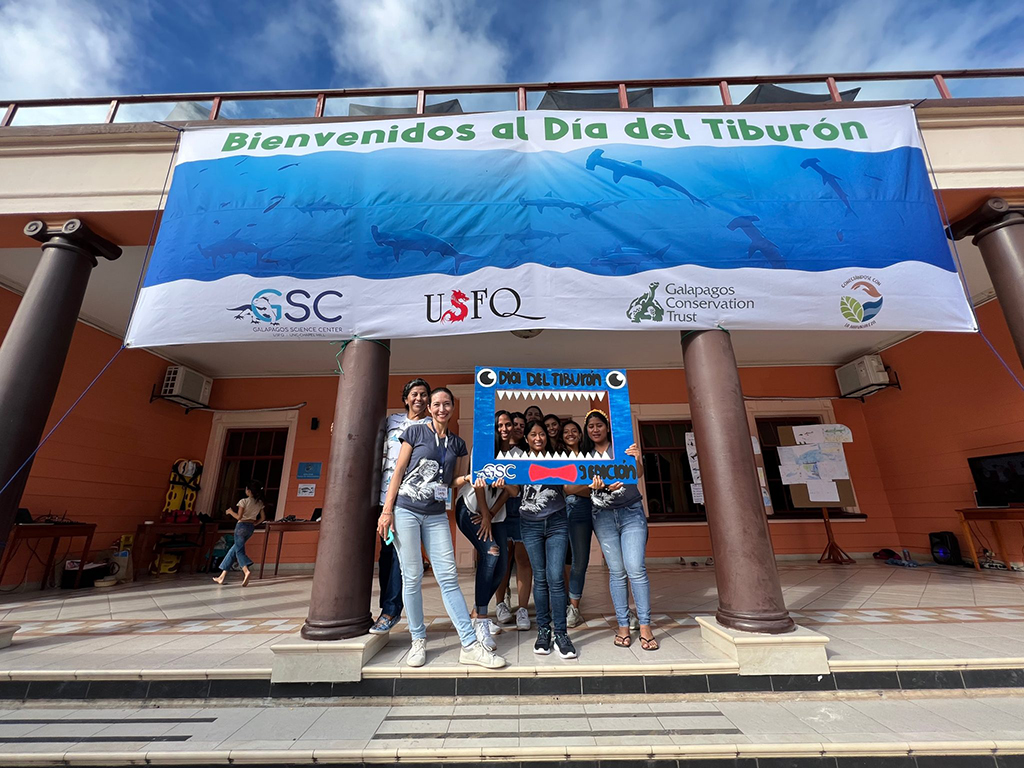
The Connecting with Nature Program seeks to promote responsibility in the conservation of natural resources in the Galapagos Islands. During its fourth phase, educational and experiential activities were carried out to raise awareness about the importance of protecting the environment and promoting sustainable practices, especially for the local community, children, and youth. The program has had the participation of thousands of people, including students, teachers, community participants, and local and international collaborators. Despite facing challenges, including regaining its audience after the COVID-19 pandemic, the program has successfully executed numerous activities and is crucial to the conservation of natural resources in the Galapagos Islands.
Learn more about the community outreach programs here and hear Leidy describe many of the outreach initiatives in the following video!

